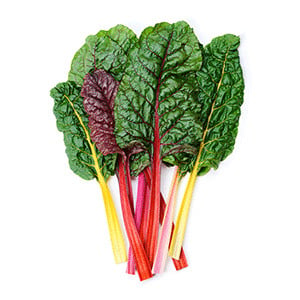Chard

Chard
Beta vulgaris subsp. vulgaris
Plant family
Goosefoot family (Chenopodiaceae)
Also known as
Swiss Chard
Season Overview
Propagating
Planting
Harvest
J
F
M
A
M
J
J
A
S
O
N
D
Details
Light requirement
Semi-shaded
Water requirement
Wet
Soil
Light (sandy)
Nutrient requirement
Medium
Plant distance
30 cm
Row spacing
40 cm
Seeding depth
1 cm
Instructions
The season for this plant is over. The following instructions are for the next season.
Mid of March
Propagating
End of March
Planting
Beginning of April
Transplanting
Description
Biennial goosefoot with two groups of varieties: stem or ribbed chard and leaf or cut chard. Stem chard forms a very large leaf vein that can be prepared like asparagus. Leafy chard forms a much smaller leaf vein, but large leaves that can be used like spinach or raw as a salad ingredient when young.
Origin:
Coastal regions of the Mediterranean
Growing tips
When sowing chard is happy humus and nutrient-rich soil, and then should be kept moist. After germination, it is recommended to remove seedlings that grow too densely. Chard tolerates light frost and can remain outdoors in regions with mild winters. Leafy chard can be harvested continuously from about 2 months after sowing, stem chard after about 3 months. If only the outer leaves are removed and the plant is watered, the chard will grow again. A cultivation interval of 3-4 years to other goosefoot should be observed.
Companion Plants
Bean (Dwarf bean)
Bean (Runner bean)
Broccoli
Brussels sprouts
Cabbage (Cabbage)
Cabbage (Savoy cabbage)
Carrots
Cauliflower
Collard greens (Kale)
Collard greens (Tuscan kale / Dinosaur kale / Palm tree kale)
Common marigold
Kohlrabi / German turnip / Turnip cabbage
Lettuce (Radicchio / Italian chicory)
Napa cabbage / Chinese cabbage
Oregano
Pak Choi
Radish
Radishes
Rutabaga / Swedish turnip
Savory
Sunflower
Turnip
Antagonistic Plants
Diseases
Downy mildew
Pests
Beet fly
Aphids